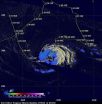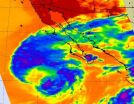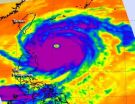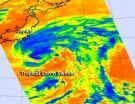(Press-News.org) UNIVERSITY PARK, Pa. -- Not all aggressive children are aggressive for the same reasons, according to Penn State researchers, who found that some kindergartners who are aggressive show low verbal abilities while others are more easily physiologically aroused. The findings suggest that different types of treatments may be needed to help kids with different underlying causes for problem behavior.
"Aggressive responses to being frustrated are a normal part of early childhood, but children are increasingly expected to manage their emotions and control their behavior when they enter school," said Lisa Gatzke-Kopp, assistant professor of human development and family studies. "Kids who don't do this well, who hit their classmates when they are frustrated or cause other types of disturbances in the classroom, are at especially high risk for long-term consequences including delinquency, violence, dropping out of school, abusing substances and even suicide. Research tells us that the earlier we can intervene, the better the chances of getting these children back on track."
Gatzke-Kopp and her colleagues, who include Mark Greenberg, professor of human development and family studies and of psychology, asked each of the kindergarten teachers in all 10 of the elementary schools in Pennsylvania's Harrisburg School District to rate the aggressive behaviors of their students on a six-point scale with items such as "gets in many fights" and "cruelty, bullying or meanness to others." Using these data, the team recruited a group of high-risk children (207 children) and a group of low-risk children (132 children) to undergo a range of neurobiological measures aimed at understanding how aggressive children experience and manage emotions differently than their non-aggressive classmates.
The team assessed all of the children's cognitive and academic skills using standardized tests that identified the children's developmental level of vocabulary, spatial reasoning and memory. In addition, the team asked teachers to provide ratings of each child's behaviors, including their levels of aggression, disobedience and sadness, as well as their social skills and level of self-control in the classroom.
The researchers also assessed the children's brain functioning using a mobile research laboratory they brought to the schools. Within the mobile lab, the team measured the children's heart rate and skin conductance activity during tasks designed to elicit emotional responses, including showing the children short video clips of a cartoon character in a variety of situations depicting fear, sadness, happiness and anger. The researchers wanted to understand how emotional and physical arousal to different types of emotions differed between children who engage in aggressive behavior and children who don't engage in aggressive behavior, as well as how different children who engage in aggressive behavior react.
According to Gatzke-Kopp, the assessments enabled the researchers to understand how cognitive and emotional processing may contribute to the development of aggressive tendencies. Specifically, the team found that 90 percent of the aggressive kids in the study could be characterized as either low in verbal ability or more easily physiologically aroused. The results appeared in a recent issue of Development and Psychopathology.
"What we may be seeing is that there are at least two different routes through which a child may act aggressively," Gatzke-Kopp said. "Because these are very different processes, these children may need different approaches to changing their behavior."
The first group of kids was characterized by lower verbal ability, lower levels of cognitive functioning and fewer executive function skills.
According to Gatzke-Kopp, children need verbal skills to understand the feelings of others and guidance from adults, and to express feelings without hitting. They also need adequate cognitive and executive-function abilities to manipulate information and to think of alternatives to hitting and fighting.
"This group of kids may be functioning at a cognitive level that is more akin to a preschooler than a kindergartner," Gatzke-Kopp said. "They have a harder time extracting what other people are feeling. They don't have a nuanced sense of emotions; everything is either happy or sad to them. So they might not be as good at recognizing how their behavior is making another child feel. They may literally have a hard time 'using their words,' so hitting becomes an easier solution when they are frustrated."
The second group of kids had good verbal and cognitive functioning, but they were more physiologically aroused. They were more emotionally reactive, and tended to have more stressors in their lives.
"These children may be able to tell you that if somebody pushed them on the playground they would go get a teacher, but the push happens and they kind of lose it and it doesn't matter what they should do, they just act on impulse," Greenberg said. "One possibility is that the threshold for managing frustration is quite low for these kids. So what we might consider a minor annoyance to them is a major threat. When they are calm they function very well, but when they lose control of their emotions, they can't control their behavior."
In the future, the team plans to examine how these different types of children respond to an intervention delivered over the second half of kindergarten and the first half of first grade.
###
The Pennsylvania Department of Health funded this research. Other authors of the paper include Christine Fortunato, postdoctoral fellow, and Michael Coccia, statistical consultant, both in the Penn State Prevention Research Center for the Promotion of Human Development.
Researchers investigate aggression among kindergartners
2012-09-28
ELSE PRESS RELEASES FROM THIS DATE:
Liver cells, insulin-producing cells, thymus can be grown in lymph nodes, Pitt team finds
2012-09-28
PITTSBURGH, Sept. 27, 2012 – Lymph nodes can provide a suitable home for a variety of cells and tissues from other organs, suggesting that a cell-based alternative to whole organ transplantation might one day be feasible, according to researchers at the University of Pittsburgh School of Medicine and its McGowan Institute for Regenerative Medicine. In a report recently published online in Nature Biotechnology, the research team showed for the first time that liver cells, thymus tissue and insulin-producing pancreatic islet cells, in an animal model, can thrive in lymph ...
Genetic sleuthing uncovers deadly new virus in Africa
2012-09-28
An isolated outbreak of a deadly disease known as acute hemorrhagic fever, which killed two people and left one gravely ill in the Democratic Republic of Congo in the summer of 2009, was probably caused by a novel virus scientists have never seen before.
Described this week in the open-access journal PLoS Pathogens, the new microbe has been named Bas-Congo virus (BASV) after the province in the southwest corner of the Congo where the three people lived.
It was discovered by an international research consortium that included the University of California, San Francisco ...
NASA sees light rainfall in Tropical Storm Nadine
2012-09-28
NASA's TRMM satellite noticed that the intensity of rainfall in Tropical Storm Nadine has diminished today, Sept. 27.
The Tropical Rainfall Measuring Mission or TRMM satellite passed over Tropical Storm Nadine on Sept. 27 at 0739 UTC (4:39 a.m. EDT) and at 0917 UTC (5:17 a.m. EDT). At NASA's Goddard Space Flight Center in Greenbelt, Md., several TRMM instruments were used to create a full picture of Nadine's weakened rainfall. The image was created with an enhanced infrared image from TRMM's Visible and InfraRed Scanner (VIRS) overlaid with rainfall data derived from ...
Simulations uncover 'flashy' secrets of merging black holes
2012-09-28
VIDEO:
Supercomputer models of merging black holes reveal properties that are crucial to understanding future detections of gravitational waves. This movie follows two orbiting black holes and their accretion disk during...
Click here for more information.
According to Einstein, whenever massive objects interact, they produce gravitational waves -- distortions in the very fabric of space and time -- that ripple outward across the universe at the speed of light. While astronomers ...
Landsat satellites find the 'sweet spot' for crops
2012-09-28
Farmers are using maps created with free data from NASA and the U.S. Geological Survey's Landsat satellites that show locations that are good and not good for growing crops.
Farmer Gary Wagner walks into his field where the summer leaves on the sugar beet plants are a rich emerald hue -- not necessarily a good color when it comes to sugar beets, either for the environment or the farmer. That hue tells Wagner that he's leaving money in the field in unused nitrogen fertilizer, which if left in the soil can act as a pollutant when washed into waterways, and in unproduced ...
NASA sees a western weakness in Tropical Storm Miriam
2012-09-28
NASA infrared satellite imagery showed Tropical Storm Miriam had strong convection and thunderstorm activity in all quadrants of the storm on Sept. 26, except the western quadrant. That activity waned dramatically in 24 hours because of strong wind shear and cooler sea surface temperatures.
The Atmospheric Infrared Sounder (AIRS) instrument that flies aboard NASA's Aqua satellite captured infrared data on Tropical Storm Miriam on Sept. 26 at 2047 UTC, when it was off the coast of Baja California. Strongest thunderstorms with very cold cloud top temperatures appear to ...
NASA sees a wide-eyed Super Typhoon Jelawat
2012-09-28
One day ago, Super Typhoon Jelawat's eye was about 25 nautical miles in diameter, today, Sept. 27, NASA satellite data indicated that eye has grown to 36 nautical miles!
The latest infrared image from the Atmospheric Infrared Sounder (AIRS) instrument that flies on NASA's Aqua satellite shows a clear eye in Typhoon Jelawat on Sept. 25. The cloud top temperatures of the thunderstorms surrounding the eye exceed -63 Fahrenheit (-52 Celsius) indicating that they are very powerful and heavy rainmakers.. Jelawat also has a rounded shape indicating that circulation is strong ...
NASA sees Tropical Storm Ewiniar embedded in low pressure
2012-09-28
NASA's Aqua satellite passed over Tropical Storm Ewiniar and noticed strong convection still persists in the storm, despite now being embedded in a subtropical area of low pressure off the coast of Japan.
As Tropical Storm Ewiniar continues to move northward it wound up in an elongated area of low pressure (called a trough) off Japan's east coast. The trough is bringing a strong westerly flow of air into Ewiniar. Despite being battered by those winds, infrared data from the Atmospheric Infrared Sounder (AIRS) instrument that flies aboard NASA's Aqua satellite is showing ...
Study shows the MDHearingAid to be an effective low cost solution to hearing loss
2012-09-28
Washington, D.C. - A study presented at the American Academy of Otolaryngology - Head & Neck Surgery Foundation Annual Meeting in Washington, D.C. shows that the MD Hearing Aid line offers a reasonable low-cost solution to those who are not using hearing aids or other amplification devices because of cost concerns.
In the study, researchers at the Michigan Ear Institute sought to evaluate a novel, inexpensive (under $200.) over- the-counter hearing aid regarding to its acoustic properties and also to test the hearing aid on patients with varying levels of hearing loss ...
Major genetic discovery explains 10 percent of aortic valve disease
2012-09-28
This press release is available in French and German.MONTREAL, Canada, September 28, 2012 - Researchers at the Sainte-Justine University Hospital Center and University of Montreal have identified genetic origins in 10% of an important form of congenital heart diseases by studying the genetic variability within families. "This is more than the sum of the genes found to date in all previous studies, which explained only 1% of the disease, says Dr. Marc-Phillip Hitz, lead author of the study published in PLOS Genetics, under the direction of Dr. Gregor Andelfinger, pediatric ...





